The Pennsylvania Railroad, legal name The Pennsylvania Railroad Company, also known as the "Pennsy", was an American Class I railroad that was established in 1846 and headquartered in Philadelphia. It was named for the commonwealth in which it was established. At its peak in 1882, the Pennsylvania Railroad was the largest railroad, the largest transportation enterprise, and the largest corporation in the world.
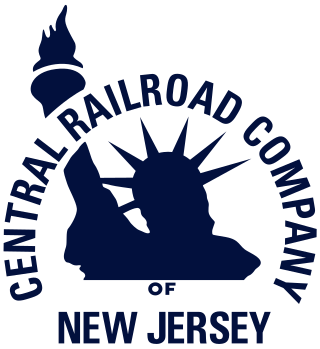
The Central Railroad of New Jersey, also known as the Jersey Central, Jersey Central Lines or New Jersey Central, was a Class I railroad with origins in the 1830s. It was absorbed into Conrail in April 1976 along with several other prominent bankrupt railroads of the Northeastern United States.
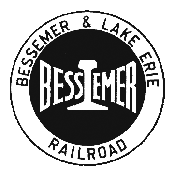
The Bessemer and Lake Erie Railroad is a class II railroad that operates in northwestern Pennsylvania and northeastern Ohio.

The Grand Trunk Western Railroad Company was an American subsidiary of the Grand Trunk Railway, later of the Canadian National Railway operating in Michigan, Illinois, Indiana, and Ohio. Since a corporate restructuring in 1971, the railroad has been under CN's subsidiary holding company, the Grand Trunk Corporation. Grand Trunk Western's routes are part of CN's Michigan Division. Its primary mainline between Chicago and Port Huron, Michigan serves as a connection between railroad interchanges in Chicago and rail lines in eastern Canada and the Northeastern United States. The railroad's extensive trackage in Detroit and across southern Michigan has made it an essential link for the automotive industry as a hauler of parts and automobiles from manufacturing plants.
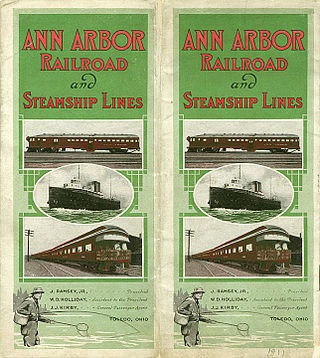
The Ann Arbor Railroad was an American railroad that operated between Toledo, Ohio, and Elberta and Frankfort, Michigan with train ferry operations across Lake Michigan. In 1967 it reported 572 million net ton-miles of revenue freight, including 107 million in "lake transfer service"; that total does not include the 39-mile subsidiary Manistique and Lake Superior Railroad.
The Pittsburgh and Lake Erie Railroad, also known as the "Little Giant", was formed on May 11, 1875. Company headquarters were located in Pittsburgh, Pennsylvania. The line connected Pittsburgh in the east with Youngstown, Ohio in the Haselton neighborhood in the west and Connellsville, Pennsylvania to the east. It did not reach Lake Erie until the formation of Conrail in 1976. The P&LE was known as the "Little Giant" since the tonnage that it moved was out of proportion to its route mileage. While it operated around one tenth of one percent of the nation's railroad miles, it hauled around one percent of its tonnage. This was largely because the P&LE served the steel mills of the greater Pittsburgh area, which consumed and shipped vast amounts of materials. It was a specialized railroad deriving much of its revenue from coal, coke, iron ore, limestone, and steel. The eventual closure of the steel mills led to the end of the P&LE as an independent line in 1992.

The Western Maryland Railway was an American Class I railroad (1852–1983) that operated in Maryland, West Virginia, and Pennsylvania. It was primarily a coal hauling and freight railroad, with a small passenger train operation.
The Wheeling and Lake Erie Railway is a Class II regional railroad that provides freight service, mainly in the areas of Northern Ohio and Western Pennsylvania. It took its name from the former Wheeling and Lake Erie Railway, most of which it bought from the Norfolk and Western Railway in 1990.

Central Station was an intercity passenger terminal in downtown Chicago, Illinois, at the southern end of Grant Park near Roosevelt Road and Michigan Avenue. Owned by the Illinois Central Railroad, it also served other companies via trackage rights. It opened in 1893, replacing Great Central Station, and closed in 1972 when Amtrak rerouted services to Union Station. The station building was demolished in 1974. It is now the site of a redevelopment called Central Station, Chicago.
The Pittsburgh, Fort Wayne and Chicago Railway was a major part of the Pennsylvania Railroad system, extending the PRR west from Pittsburgh, Pennsylvania, via Fort Wayne, Indiana, to Chicago, Illinois. It included the current Norfolk Southern-owned Fort Wayne Line east of Crestline, Ohio, to Pittsburgh, and the Fort Wayne Secondary, owned by CSX, from Crestline west to Tolleston in Gary, Indiana. CSX leased its entire portion in 2004 to the Chicago, Fort Wayne and Eastern Railroad (CFE). The remaining portion of the line from Tolleston into Chicago is now part of the Norfolk Southern's Chicago District, with a small portion of the original PFW&C trackage abandoned in favor of the parallel lines of former competitors which are now part of the modern NS system.
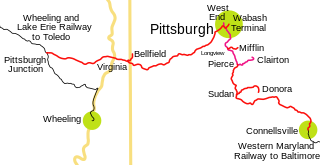
The Pittsburgh and West Virginia Railway was a railroad in the Pittsburgh, Pennsylvania, and Wheeling, West Virginia, areas. Originally built as the Wabash Pittsburgh Terminal Railway, a Pittsburgh extension of George J. Gould's Wabash Railroad, the venture entered receivership in 1908 and the line was cut loose. An extension completed in 1931 connected it to the Western Maryland Railway at Connellsville, Pennsylvania, forming part of the Alphabet Route, a coalition of independent lines between the Northeastern United States and the Midwest. It was leased by the Norfolk and Western Railway in 1964 in conjunction with the N&W acquiring several other sections of the former Alphabet Route, but was leased to the new spinoff Wheeling and Lake Erie Railway in 1990, just months before the N&W was merged into the Norfolk Southern Railway.

Union Railroad is a Class III switching railroad located in Allegheny County in Western Pennsylvania. The company is owned by Transtar, Inc., which is a subsidiary of Fortress Transportation and Infrastructure Investors, after being acquired from U.S. Steel in 2021. The railroad's primary customers are the three plants of the USS Mon Valley Works, the USS Edgar Thomson Steel Works, the USS Irvin Works and the USS Clairton Works.
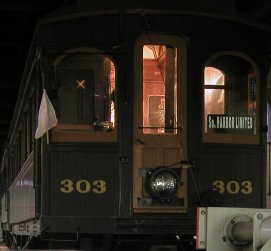
Cleveland has been and continues to be deeply rooted in railroad history.
The Keystone Subdivision is a railroad line owned and operated by CSX Transportation in the U.S. states of Maryland and Pennsylvania. The line runs from Cumberland, Maryland, west to McKeesport, Pennsylvania, along a former Baltimore and Ohio Railroad (B&O) line. The line includes the well-known Sand Patch Grade over the Allegheny Mountains.

The P&W Subdivision is a railroad line owned and operated by CSX Transportation, the Allegheny Valley Railroad (AVR), and the Buffalo and Pittsburgh Railroad (BPRR) in the U.S. state of Pennsylvania. The line runs from Rankin north through Pittsburgh to West Pittsburg along a former Baltimore and Ohio Railroad line, once the Pittsburgh and Western Railroad.

The Main Line of the Pennsylvania Railroad was a rail line in Pennsylvania connecting Philadelphia with Pittsburgh via Harrisburg. The rail line was split into two rail lines, and now all of its right-of-way is a cross-state corridor, composed of Amtrak's Philadelphia to Harrisburg Main Line and the Norfolk Southern Railway's Pittsburgh Line.
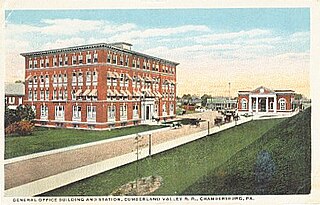
The Cumberland Valley Railroad was an early railroad in Pennsylvania, United States, originally chartered in 1831 to connect with Pennsylvania's Main Line of Public Works. Freight and passenger service in the Cumberland Valley in south central Pennsylvania from near Harrisburg to Chambersburg began in 1837, with service later extended to Hagerstown, Maryland, and then extending into the Shenandoah Valley to Winchester, Virginia. It employed up to 1,800 workers.
The Whitehall Branch was a rail line owned and operated by the Pennsylvania Railroad in the U.S. state of Pennsylvania. The line ran from Monongahela Branch near the 30th Street yard to a connection with the Pittsburgh and Lake Erie Railroad and the Allegheny and South Side Railway at the 21st Street Yard in the South Side of Pittsburgh. The line was abandoned by Conrail and has been removed.
The Youngstown and Southeastern Railroad is a short-line railroad subsidiary of Midwest & Bluegrass Rail that operates freight trains between Youngstown, Ohio and Darlington, Pennsylvania, United States. The line is owned by the Columbiana County Port Authority, leased to the Eastern States Railroad, which is owned by the line's primary shipper, and contracted out to the YSRR. Freight is interchanged with CSX Transportation and the Norfolk Southern Railway at the Youngstown end.

The Wabash Railroad was a Class I railroad that operated in the mid-central United States. It served a large area, including track in the states of Ohio, Indiana, Illinois, Iowa, Michigan, and Missouri and the province of Ontario. Its primary connections included Chicago, Illinois; Kansas City, Missouri; Detroit, Michigan; Buffalo, New York; St. Louis, Missouri; and Toledo, Ohio.












